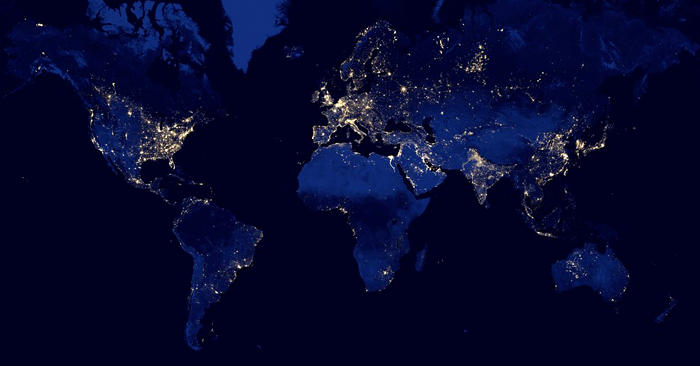The Night Sky
Take a look at The Lights of the U.S. photo map at: www.darksky.org. This montage of satellite photos makes it clear most of America’s population is east of the Mississippi River and is highly urbanized.The population density of the U.S. is dramatically lower west of the Mississippi River. In troubled times fewer people means fewer problems. In the event of a social upheaval, rioting, urban looting, et cetera, being west of the Mississippi will mean a statistically much lower chance of coming face to face with lawless rioters or looters When The Stuff Hits The Fan (WTSHTF).
The northeastern states depend on nuclear power plants for 47% of their electricity. (South Carolina is similarly dependent.) This is an unacceptable level of high technology systems dependence, particularly in light of the emerging terrorist threat. You must also consider that virtually all of the eastern states are downwind of major nuclear targets–most notably the USAF missile fields in the Dakotas. If for one reason or another you are stuck in the northeast, consider New Hampshire or Vermont. They are both gun friendly and have more self-sufficient lifestyle. But unless you have some compelling reason to stay in the East, I most strongly encourage you to Go West!
Urbanization
The other startling thing you will notice when looking at the Lights photo montage is that even in the western states, Americans live in a highly urbanized society. Roughly 90% of the population is crammed into 5% of the land area, mostly within 50 miles of the coast. But there are large patches of the west where there are virtually no lights at all–particularly in the Great Basin region that extends from the back side of the Sierra Nevada mountains to Utah and Eastern Oregon. The average population density in this region is less than two people per square mile.
As an example of the low population density in the west, I often like to cite Idaho County, Idaho: This one county measures 8,485 square miles–bigger than Connecticut and Rhode Island combined. But it has a population of just 15,400. And of those residents, roughly 3,300 people live in Grangeville, the county seat. Who lives in the rest of the County? Nary a soul. There are far more deer and elk than there are people. The population density of the county is 1.8 people per square mile. The county has more than 3 million acres of U.S. Forest Service land, BLM land, and designated Federal wilderness areas. Now that is elbow room!










